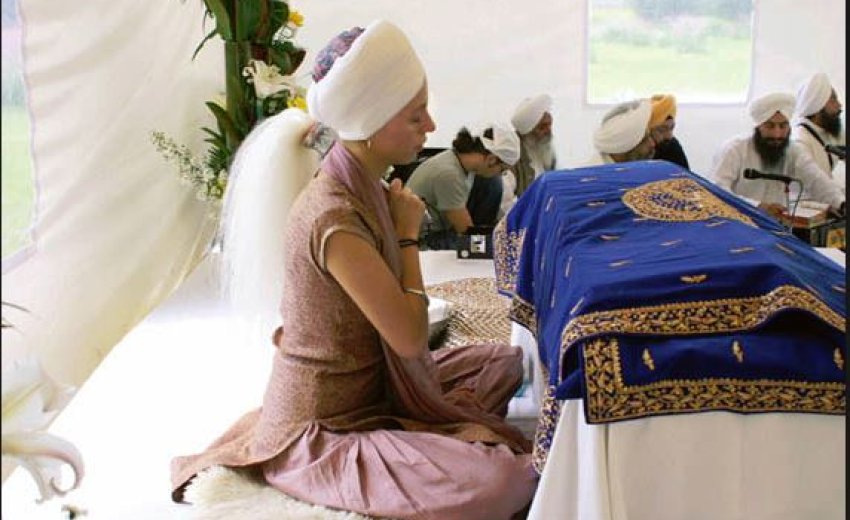 Many eons ago, my friend Mewa Singh wrote:
Many eons ago, my friend Mewa Singh wrote:
Most Sikh organizations’ backbone tend to be its Kaurs.[link]
[As a side note, kaptaan, where did you go?] I definitely second that thought. A common lament that I often hear from some Sikh men is that somehow Sikh women are somehow lacking in terms of their commitment to the faith. I do not subscribe to this theory, and would actually refute it by Mewa Singh’s observation quoted above. By far the majority of the activists that I have ever encountered have all been Kaurs, despite the often blind Sikh organizations. The banal complaints of some Sikh men, for me, are just that – banal complaints.
Still, as an agent of change within the community, I believe a glance at the structural problems within our religious community is warranted. A recent spate of articles has made me wish to visit the issue of female Granthis
 Although through new Sikh organizations, the dynamic of learning
only through the Gurdwara is changing, still these organizations are
meant to complement, not replace Gurdwara education. Most information
about Sikhi tends to come from the Gurdwara and Khalsa/Punjabi
schools. A recent study by the National Bureau of Economic Research
Working Paper on gender and academic achievement at the U.S. Air Force
Academy has recently reported that the importance of female mentors may
be even more powerful than previously thought. The joint UC
Davis-USAFA study found that by merely replacing a male instructor with
a female one can have a strong effect on female achievement, with the
power to erase the gender gap entirely.
Although through new Sikh organizations, the dynamic of learning
only through the Gurdwara is changing, still these organizations are
meant to complement, not replace Gurdwara education. Most information
about Sikhi tends to come from the Gurdwara and Khalsa/Punjabi
schools. A recent study by the National Bureau of Economic Research
Working Paper on gender and academic achievement at the U.S. Air Force
Academy has recently reported that the importance of female mentors may
be even more powerful than previously thought. The joint UC
Davis-USAFA study found that by merely replacing a male instructor with
a female one can have a strong effect on female achievement, with the
power to erase the gender gap entirely.
However, they did not go so far as to say it was women only. Some men had tremendous impacts and were also able to erase the gender gap. However, what these men did effectively, the study did not shed light.
What kind of man makes a good mentor? Is it because, as is sometimes suggested, men with daughters make good mentors, having developed greater empathy for the challenges faced by their female students? Or differences in teaching style? The authors unfortunately don’t know much about the Academy’s teaching staff, so for now the enormous impact of professor gender remains a bit of a black box.[link]
While the analogy is not precise, how much better would be female
Granthis as mentors in our community? I know personally, many members
of the Sangat look to the Granthis at the Gurdwara in personal guidance
and assistance. Can we even have female Granthis?
Does the lifestyle – often alone, often traveling, with little respect
and meager wages – conducive to the community’s social constructions of
women’s work? What are the major shifts that would have to change?
Could existing institutions in Punjab meet this challenge or will this
really begin by being a diaspora phenomenon.
The data in other fields reveals that female mentors are important. Anecdotal information from friends, family, and associates seems to indicate the same. What are some suggestions to make this a reality?

